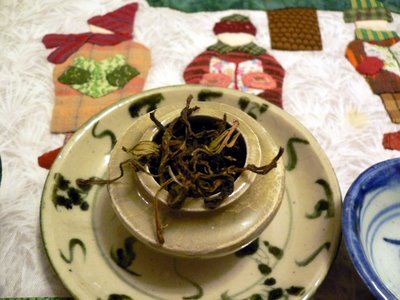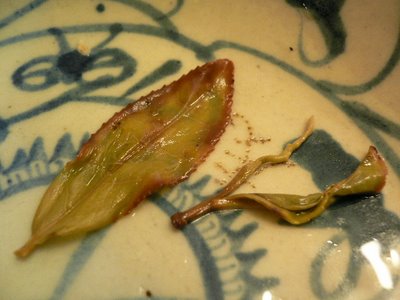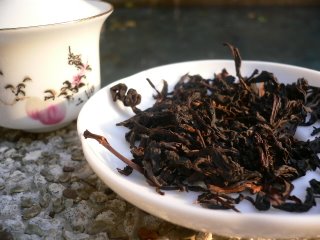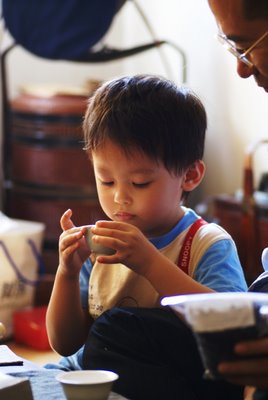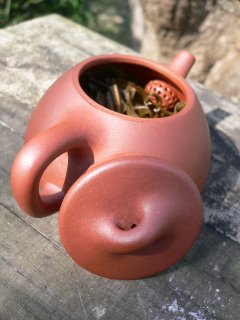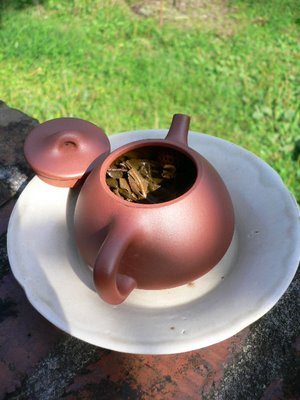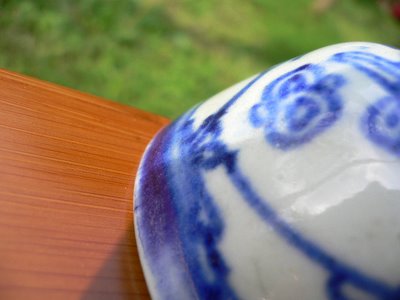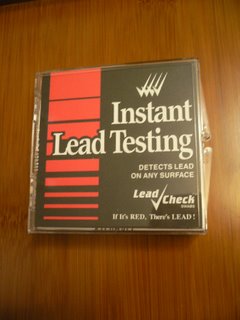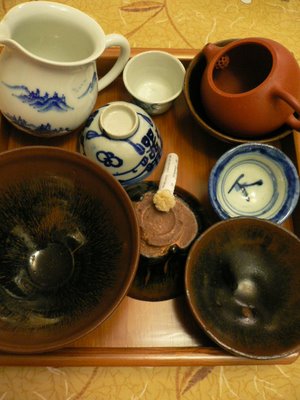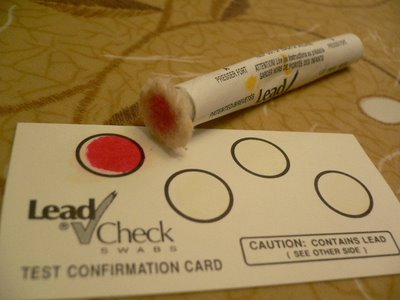La discussion sur la meilleure manière de préparer l'infusion, comment ajouter l'eau chaude au thé, suite à mon dernier article, me laisse à penser qu'il est opportun que je rappelle quelques 'règles' ou conseils. Ainsi, durant les fêtes de fin d'année, en guise de digestif pour les tranches de foie gras et de buche de Noël -que je vous souhaite succulentes-, vous pourrez encore mieux réussir vos thés chinois façon gongfucha pour le plaisir et l'admiration de toute votre famille.
* Esthétique visuelle:
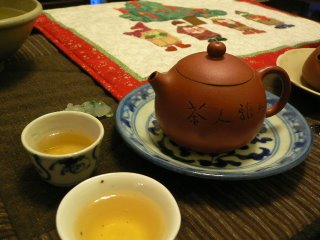
On boit aussi avec les yeux. Commencez par débarasser et nettoyer votre table. Ajoutez des petites touches de décoration personnelle (petite bougie, feuilles de houx, jolie nappe...). La décoration de Noël se marie souvent très bien avec le style chinois, notamment les couleurs rouges. Un seau caché sous la table pour recueillir les eaux usées du rinçage/préchauffage de l'équipement est pratique si vous n'utilisez pas de plateau en bambou.
* Choisir entre un zhong en porcelaine et une théière Yixing
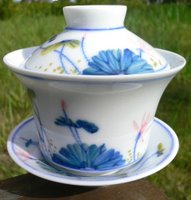
Le zhong (gaibei/gaiwan) est un instrument idéal pour découvrir et analyser un thé. Il a un rendu fidèle du goût original de chaque thé. Je le conseille pour faire des dégustations précises, pour les thés verts, blancs, jaunes et rouges. C'est l'instrument des professionnels. Sa manipulation demande une certaine pratique pour ne pas se bruler les doigts. Mais si vous êtes débutants, optez pour une petite théière en porcelaine.

Pour les thés oolongs et les puerhs, il est possible de choisir une théière en Yixing. Plus simple à manier, gardant mieux la chaleur, elle apporte un plus estétique et gustatif au thé si on la choisit bien (cf mes leçons). Si vous n'êtes pas certain, le plus simple est de la tester en parallèle avec un zhong avant le grand jour. Si votre théière ne donne pas de meilleur résultat qu'avec le zhong, elle ne correspond pas à ce thé-ci. Prenez alors le zhong ou une autre théière qui donne de meilleurs résultats.
* L'eau
Utilisez une eau peu minéralisée et plutôt au goût moelleux, sucré que dur et acide.
L'eau doit avoir atteint l'ébullition (bulles de taille d'oeil de crabe). Notamment pour la première infusion des oolongs et des puerhs, il est indispensable que la chaleur soit maximum pour bien ouvrir ces feuilles.
Lorsque l'eau bout longtemps, elle 'vieillit' et perd de sa qualité. On ajoutera donc de l'eau froide dans la bouilloire à intervalles réguliers et l'on portera cette eau à ébullition doucement à chaque fois.
Si votre cheminée le permet, c'est peut-être le moment de faire bouillir l'eau sur un feu de bois. En théorie, c'est l'idéal (n'ayant pas de cheminée à Taiwan, je n'ai pas trop l'occasion de tester!).
* Préchauffage
Le manque de préchauffage et une vitesse d'infusion trop lente lors de la première infusion sont les raisons principales des ratés pour les thés oolongs et puerhs. Une fois bien ouverts et chauds, vous pourrez ralentir votre débit d'eau chaude. Préchauffez aussi cruche (chahai) et coupes à thé.
* Quantité de feuilles et durée d'infusion
Meilleure la qualité du thé, moins on en utilise.
Moins on utilise de feuilles, plus on le laisse infuser.
Un des arts du gongfu consiste à trouver l'optimum en terme quantité et temps. L'autre art est de savoir composer et de s'adapter aux circonstances. Ainsi, chaque thé est une nouvelle aventure et non une recette inaltérable.
* Echantillons de thés.
Je recommande de boire rapidement vos échantillons de thé. La petite quantité et l'emballage en petits paquets à zip plastiques transparents fait que le thé ne s'y conserve pas trop bien, notamment les oolongs peu oxidés et les thés verts. Mais même pour les puerhs ou les oolongs fermentés, je conseille de ne pas attendre, car le thé a pour caractéristique de facilement s'imprégner des odeurs environnantes.
Pour apprécier le thé, le mieux est d'avoir du temps, d'être relax et d'avoir envie de se faire plaisir et de faire plaisir aux autres. Bref, ces fêtes sont une bonne occasion de boire une grande variété de vos meilleures feuilles!
Bonne dégustation!
 The flowers are so strong and big that they can hold my Baotai zhuni Shui Ping teapot:
The flowers are so strong and big that they can hold my Baotai zhuni Shui Ping teapot:  (Don't try this stunt at home. We decline responsibility for any loss or consequential damages.)
(Don't try this stunt at home. We decline responsibility for any loss or consequential damages.) Speaking of scents, Eitan, a reader in Seattle wrote me that: "I own a zisha pitcher (not a teapot) that I too often leave overnight with it's lid on when there is still moisture inside. Because of this there is a faint mildew smell in it, and I am afraid it affects the tea's smell and taste. Is there any way to get rid of this smell?"
Speaking of scents, Eitan, a reader in Seattle wrote me that: "I own a zisha pitcher (not a teapot) that I too often leave overnight with it's lid on when there is still moisture inside. Because of this there is a faint mildew smell in it, and I am afraid it affects the tea's smell and taste. Is there any way to get rid of this smell?"
